



Best website for Herkimer diamond information
HerkimerHistory.Com
Last Updated:
A community project where Herkimer diamond scholars, collectors and miners share information.

You can help!
Find out how.
Click here

About this Webpage:
If you use the information from this website please cite the author, year and the website
Herkimer diamonds often contain other materials within them that are called inclusions. These inclusions can be minerals or bubbles. The bubbles are called fluid inclusions (locally called enhydros) as they often do contain fluid that was trapped during the crystal forming process. The most common type of inclusion is a fracture, and these can have a rainbow glimmer to them. The other common inclusion is a baby floater Herkimer diamond. A seperate page is dedicated to them. Below are photos and descriptions of various inclusions.


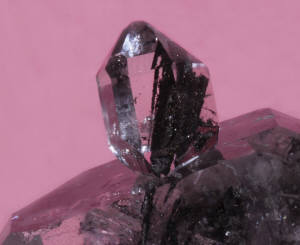
W. David Hoisington, Ph.D.

Bubbles as Inclusions

Hydrocarbon as Inclusions




Other Inclusions

Minerals as Inclusions
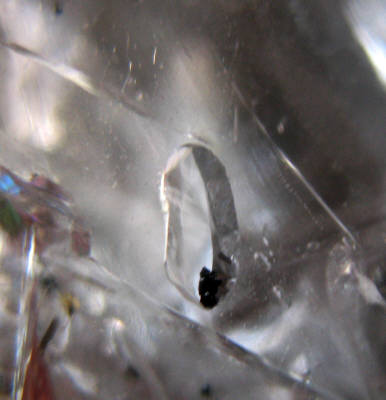
<-H
Above is a photo of "bubble trails" on the interior of a small Herkimer diamond. Distance across the photo is about 7 mm. Specimen is from Bob of N. Adams and was collected at DA in Fonda, NY 2008. By permission, photo DrD, 2009. (The "smudge" is the surface of the crystal face).
Of note are the small gas bubbles within the fluid inclusions, some with 2 rings indicating multiple phases, or types, of fluid/gas within the inclusion.
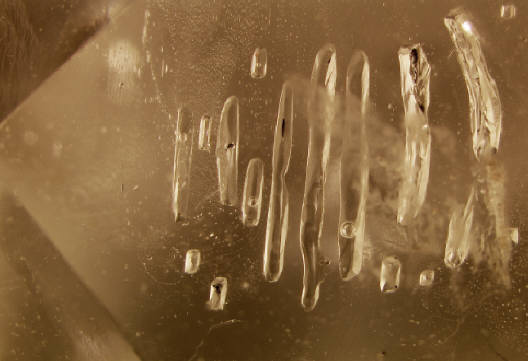
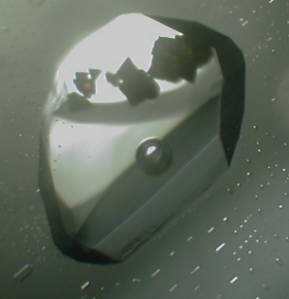
The photo to the right is of a fluid inclusion with many features. Here you can clearly see the double ringed round bubble (like in the above photo), but you can also see blocky solid crystals. The smaller ones are translucent with an amber color. Both the sphere and the blocky crystals move around inside the space when the crystal is moved.
Note also the tiny bubble trails all in a row, much like what can be see in an ice cube.

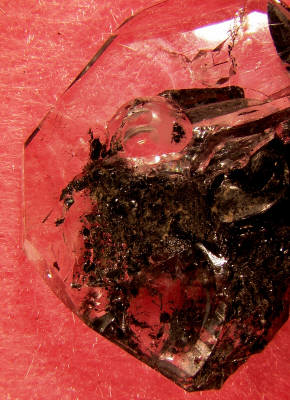
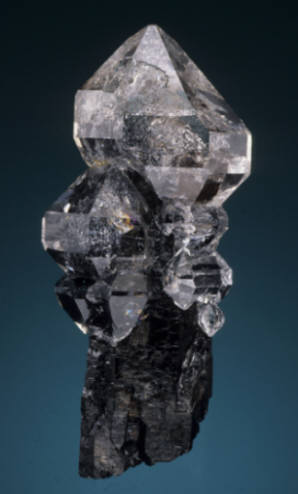
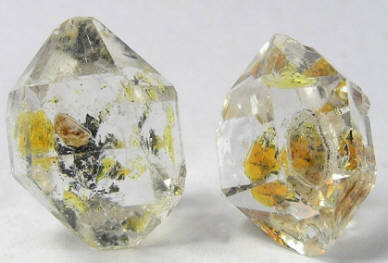
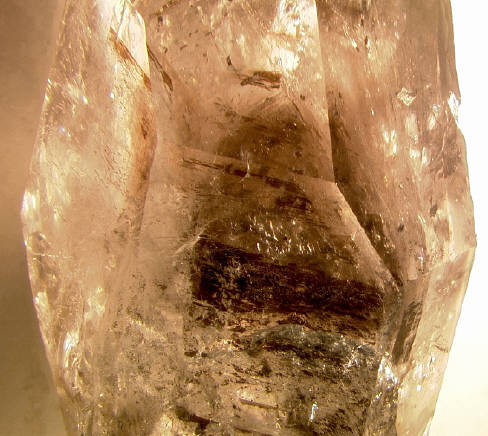
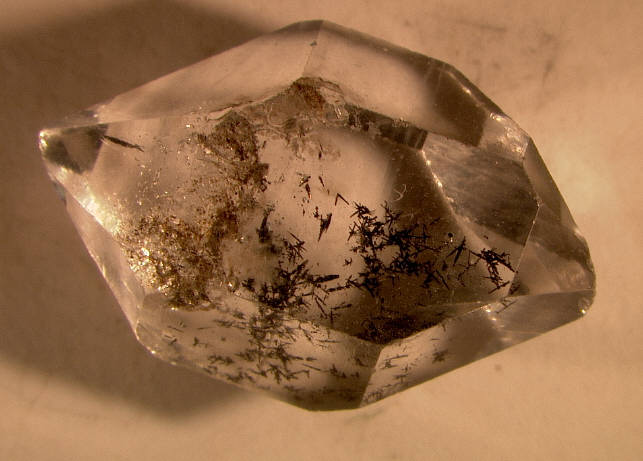
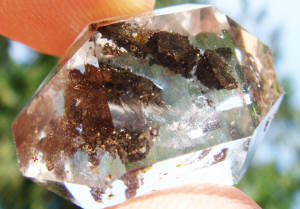
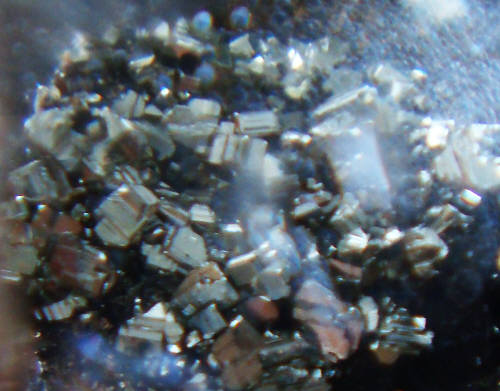
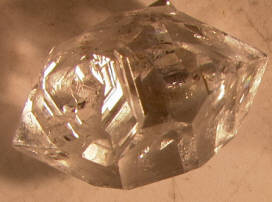
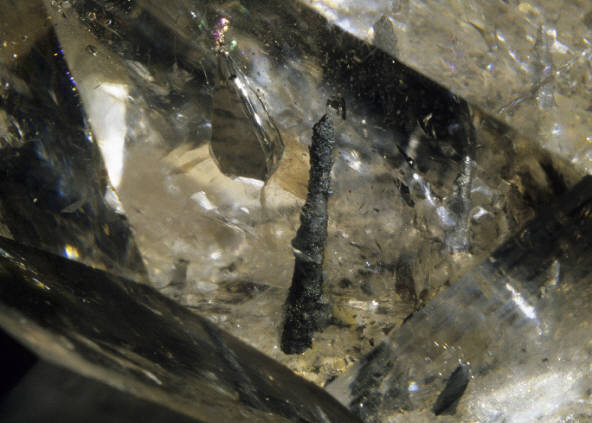
On the right is quite an unusual inclusion. Here is a "bumpy black rod" (most likely marcasite with alteration) part way inside the crystal and part outside. There also appear to be many fragments to the right of the rod and possibly an "enhydro" to the upper left. This is a Jeff Scovil photo of a specimen from the Bob Borofsky collection. It is from Little Falls, NY (TM), approximately 2.5 cm across the photo. Looking over the photos of Herkimers from this location, many have inclusions. Photo taken in 1999 and donated in 2009.
The photo at the top of this page is also of marasite rods as inclusions
After fractures hydrocarbon is probably the most abundant inclusion found within Herkimer diamonds. It can range in intensity from just a flake (photo above), to a scattering of flakes as in the thin tabular crystal on the left (from TCR photo by Dr. D. with the mine owners permission, 2009). The intensity can increase to where the crystal approaches being black (upper right).
There is black prismatic quartz in the photo on the lower right. This is a scepter, and a special type of inclusion (From the collection of Bob Borofsky).
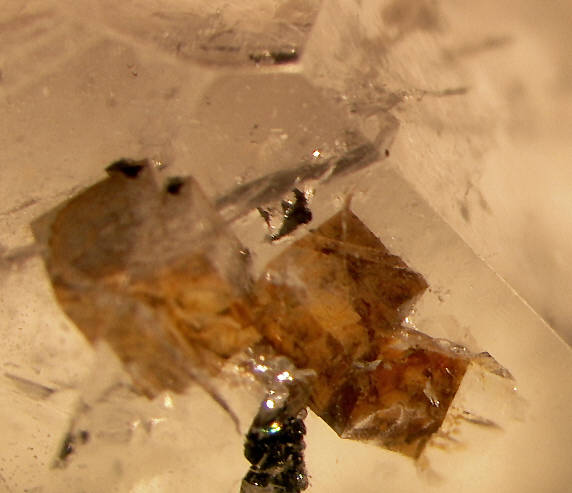
Nice "cubic looking" rhombs of tan dolomite as inclusions. The termination tip of the Herkimer diamond can be seen at the top of the photo. Fracture inclusions (F) and hydrocarbon (H) can also be seen. The crystal is from the AD, the photo covers about 5 mm across, taken 2009 Dr. D.
There is a nice photo of a dolomite inclusion on the quartz sphere page.

July, 2011